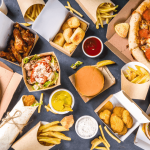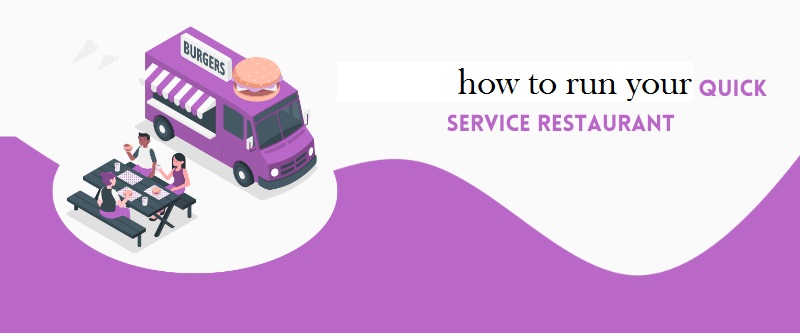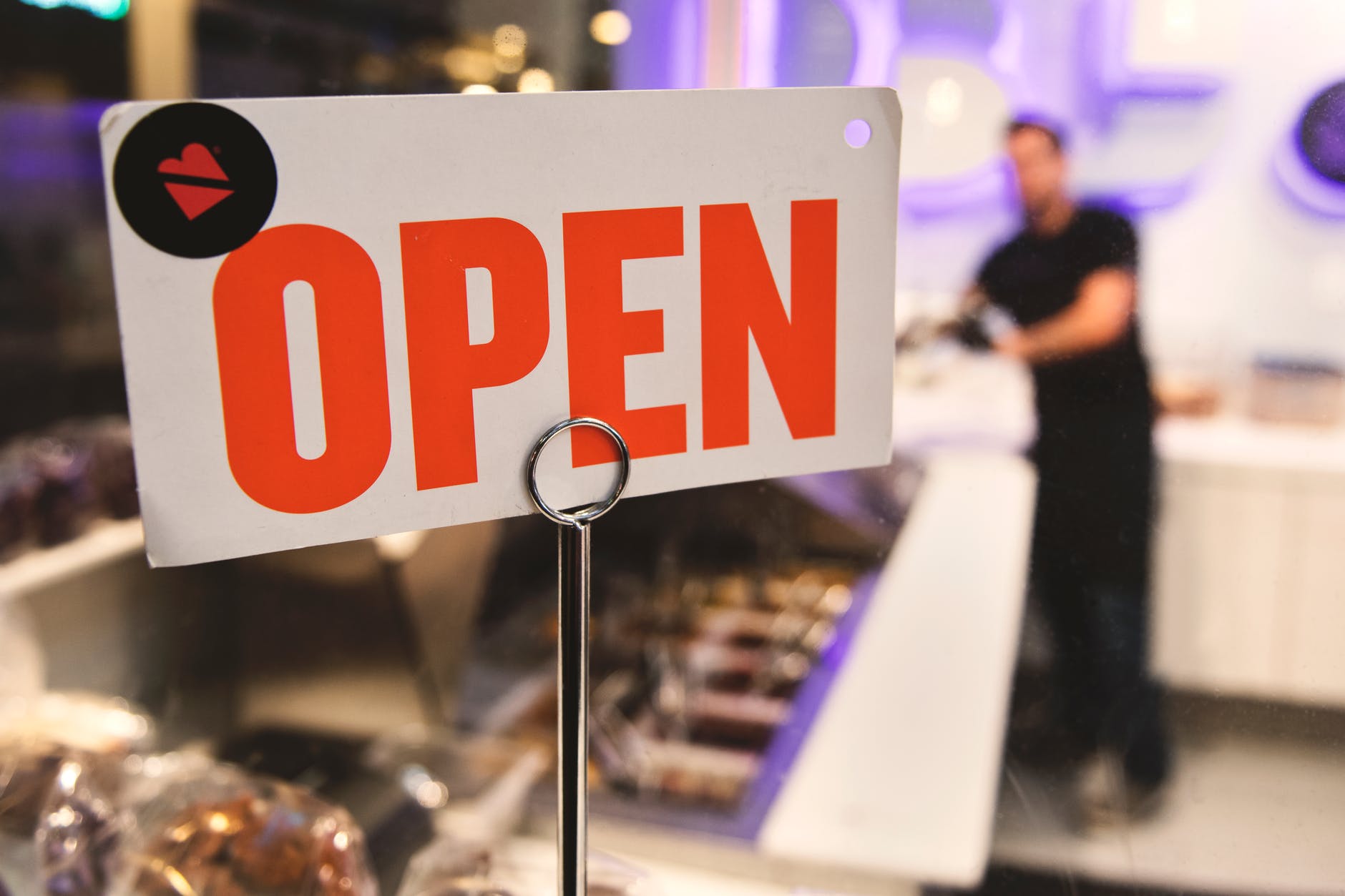Do you have the perfect quick-service restaurant business idea?
Although entering the restaurant market requires some work, a unique quick-service idea coupled with a sound business strategy may help you build a devoted customer base.
QSRs’ reputation for delivering oily, unhealthy foods like fried chicken and burgers is fading. Most businesses have had to adjust to a more aware market than ever before of living a healthy lifestyle. You can see this trend in the rise of healthier choices among many of the industry’s leading companies.
There are also changes in consumer trends and many restaurant challenges brought about by the spread of COVID-19.
With the help of this quick-service restaurant guide, you’ll learn everything you need to know to open your own QSR.
What is a Quick Service Restaurant?
A fast-food restaurant is referred to as a “quick-service restaurant,” or QSR, in the business. It’s easiest to understand if you think about fast-food restaurants like McDonald’s, KFC, and even Starbucks.
A fast-food restaurant focuses on delivering meals to guests as quickly and effectively as possible.
QSRs often provide cuisine at a reduced cost, with little or no table service and a relaxed ambiance.
Types of Quick Service Restaurants
QSR usually operates as chains or franchises because they profit from the number of people visiting them.
These restaurants can harness the footfall frequency from numerous sites and contribute to the company’s worth by operating several stores.
Many QSRs use the franchise model because it allows chains to multiply over broad areas while sharing the expense of opening each restaurant between the franchisee and the franchisor.
However, not all QSRs are franchised, and others follow more traditional business methods.
These establishments usually specialize in complementary foods or a particular type of food, such as Starbucks.
Types of QSRs include:
Full-Service Restaurants
These are establishments where the waiter at the table takes care of both the customer order and the meal delivery.
Self-Service Restaurants
Customers approach the counter and place their orders at self-service restaurants. They take the order from the counter and collect it on their own.
Assisted Self-Service Restaurants
These restaurants are where one of the two, either waiters collect customer’s orders at their table or bring their meal to the customer’s table.
COVID-19’s Impact on Quick Service Restaurants
With the majority of the world’s population forced to stay at home and adhere to physical-distancing requirements, eateries and cafés that were previously lively are now empty. Although some QSRs are experiencing an increase in takeout and delivery orders.
Various QSRs are closed or functioning on a limited basis in many countries, offering takeout, pickup, delivery, drive-through, or a mix of those choices.
Even among QSRs that have remained open, the business has plummeted. According to consumer surveys done by McKinsey in late March across Europe and the United States, most customers plan to cut their spending on all restaurant meals, including takeaway and delivery, QSRs, and other types of eateries, during the crisis.
As the crisis fades, all QSRs must prepare for the adjustments in customer attitudes and behavior that will create the industry’s new normal.
As QSRs develop internal skills, invest in next-generation technologies (such as delivery drones), or partner with third-party suppliers, the competitive environment in food delivery will change.
QSRs requires an operational model that can cope with the industry’s high level of unpredictability. Launching a “plan-ahead team” and directing that team to operate across several time horizons are actions they may take to drive their decision-making.
Opening a Quick Service Restaurant
Much like any other restaurant, opening a QSR takes planning and determination. Here are some tips to keep in mind when opening a QSR.
Make a Plan
Creating a business plan is the first step in launching any brand. A restaurant business plan is a roadmap for your complete project scope, outlining how you’ll fund, operate, promote, staff, and run your restaurant once it’s up and running.
This plan doesn’t have to be lengthy, but it should outline what you want to achieve and how you intend to do it.
And it would help if you had all of this in place before taking the first step toward opening your own QSR. It should include (and be signed off by) all of your present company partners in addition to putting out your concept, market research, financial details, costs, revenue estimates, and marketing plans.
If you want to attract outside funding, you’ll need a solid business plan.
Include things such as:
- your company’s overview, what type of QSR are you?
- Your operations, who are your suppliers, and your plans?
- What is your staffing and service model?
- What sets you apart from your competitors?
A business plan is an essential first step in starting a restaurant. A comprehensive business plan will act as the bedrock of your restaurant’s operations and position you for success.
Create Your Menu
Creating your menu is a significant aspect of opening your QSR. Your menu, like so many other components of your restaurant’s setup, should be a reflection of your brand.
It would be best if your menu were in line with your brand. So if you are a restaurant focusing on healthy eating, you don’t want your menu consisting of only fried foods.
Even if the meal is outstanding, the disparity will perplex customers, making it impossible to create a devoted following.
Prepare your menu by considering the cost of food, the supply chains involved, the workforce necessary to prepare everything every shift, and the type of cuisine you want to emphasize at your restaurant.
Other considerations, of course, will have an impact on your menu. For instance, you should be aware of the competitive environment and ensure that your menu has a special place within it. You’ll also have to factor in your suppliers and the ingredients they can realistically deliver.
It’s pointless to put a dish on the menu that requires an item you know you won’t be able to acquire.
Establishing how each of the menu items you offer can help you build your business is what a “Menu Strategy” is all about.
One of the keys to growing your QSR business is effective menu planning. It is the primary means of communicating with customers and the most important document for guiding and regulating the restaurant.
It’s crucial to get a sense of the local cuisine and popular menus. Whether it’s a student-dominated region, corporate workers, an industrial area, a residential neighborhood, or an entertainment park, the pricing of food products must cater to the buying power of the consumers.
Portion size and consistency draw consumers from all over the world back, so having a well-thought-out menu is always a plus.
Hiring Your Staff
A restaurant’s food and customer service are only as excellent as the food it offers. Both of those characteristics are, to some extent, a direct effect of the workers you pick to manage your QSR.
Your restaurant will require at least a few distinct sorts of staff, regardless of the type of cuisine you offer.
Your restaurant will require a handful of chefs to assist in the preparation of your restaurant’s delectable cuisine, as well as a few managers to monitor daily operations. Additional staff members can assist in preparing ingredients, serving customers, and cleaning the eating spaces.
Consider whether you’ll require a delivery crew or a third-party delivery partner in addition to these critical employees.
There are almost too many strategies to count when training your workforce. Most QSRs use a mix of experienced and novice employees.
The training of younger personnel is often overlooked by experienced staff, and most of the time, exercise is “on-the-job.” This approach means that employees will pick up new skills as they go.
This approach allows a restaurant to teach a new employee considerably more quickly and with fewer interruptions than a traditional training technique.
A thriving restaurant relies heavily on its workers.
The restaurant business is now in a difficult position, with a tight labor market and low employment relative to the number of open positions.
The secret to success is to create a restaurant environment that offers outstanding compensation, decent benefits, a unique culture, and prospects for advancement.
Create a Marketing Strategy
Marketing is another crucial component of starting a QSR. Designing a marketing plan entails defining your restaurant’s identity and building a recognizable brand.
The name, logo, color scheme, aesthetics, slogan, mission statement, values, and the overarching story of your QSR are all part of its brand.
You’ll want to tailor your restaurant’s brand to the preferences of your target customer.
Customers will be more inclined to pick your QSR over others if you meet their expectations and ideals.
You’ll need a strong marketing effort to familiarise people with your QSR’s brand. If you want to persuade your target market that your QSR is worth visiting, your marketing must effectively express your brand message.
It would help if you sold to your target demographic using the channels in which they are most comfortable. There are a few popular routes to which most customers will respond.
Website
Given the internet era and the fact that COVID-19 resulted in numerous lockdowns, you should consider having an online presence as part of your marketing strategy.
Their storefront is no longer a physical location for many eateries but rather their restaurant website.
It is critical to have a website that offers customers important information about your restaurants, such as your menu, opening hours, and location.
To stay up with the food delivery trend, you might want to explore offering online ordering.
Blink is a quick commerce enablement platform that provides restaurants with online ordering solutions in a branded website and mobile application.
You can easily create an effective online presence without going through the hassle of engineering your website.
To learn more, book a demo with our representatives today.
Social Media
Due to its mix of cost and precision targeting, social media advertising is hard to top for a small business that needs to raise awareness and develop its customer base on a budget.
Instagram, for example, is a perfect fit for restaurant marketing because of its visual nature. Depending on your target audience’s interests, you could also succeed with sites like Facebook, Instagram, Twitter, and TikTok.
It’s also crucial to consider whether you’ll employ these sites’ paid advertising choices.
Email Marketing
Email remains a highly successful marketing vehicle even after being around for so long.
It isn’t, however, an effective strategy for attracting new customers. Instead, we encourage that you use email to strengthen your current customer relationships.
You may regularly send your existing customers promotional emails with coupons and other incentives to entice them to return to your restaurant.
You may also mix these promotions with educational material to keep people interested in your business, such as new menu items or upcoming events.
Online Reviews
Customer review sites are the new word-of-mouth marketing in the digital era. Whether you ask them to or not, your customers will leave reviews about your business, so why not be proactive about it?
Establish a presence on sites such as Yelp and Google My Business. In-store signage, social media posts, and marketing emails encourage consumers to give favorable reviews.
You may demonstrate your devotion to providing your customers a positive experience by verifying that you care about quickly addressing customer concerns, which is a great marketing strategy in and of itself.
Loyalty Programs
Another fantastic approach to put collected emails and customer contact information to good use is to start a loyalty program for your business.
Customers will receive incentives and special offers as part of a loyalty program. Still, you will gain access to a plethora of data and insights that you can use to motivate future purchases.
With Blink’s portals, you not only gain ownership and access to customer data customers can also use the in-built loyalty programs on their orders.
Best Quick Service Restaurants
According to the QSR Magazine’s QSR 50 Report, these are the top fast-food brands in America.
-
McDonald’s
-
Starbucks
-
Chick-fil-A
-
Taco Bell
-
Wendy’s
-
Burger King
-
Dunkin’
-
Subway
-
Domino’s
-
Chipotle
In Conclusion
The qualities of a typical QSR are low prices, quick service, and handy locations. Quick Service Restaurants are low-risk endeavors since they are low-cost in investment and operations.
The QSR market is enormous, with plenty of room for expansion, and with this knowledge in your back pocket, you’ll be well on your way to becoming a success.
Related Articles:
 How to Write a Restaurant Food Business Plan for Restaurants In a Post Pandemic Industry?
How to Write a Restaurant Food Business Plan for Restaurants In a Post Pandemic Industry?
 Top 8 Michelin Star Restaurants in Dubai You Can Order From
Top 8 Michelin Star Restaurants in Dubai You Can Order From
 How to Attract More Customers to Your Restaurant (*Updated 2023 Guide)
How to Attract More Customers to Your Restaurant (*Updated 2023 Guide)
 How to Choose the Best Restaurant Name (Great Ideas Included)
How to Choose the Best Restaurant Name (Great Ideas Included)
 How to Create a More Inclusive Restaurant Workplace
How to Create a More Inclusive Restaurant Workplace

